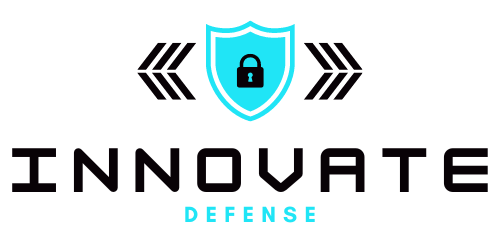IT supply chains face numerous challenges, including hardware shortages, disruptions, and rising demand for digital solutions.
Companies must adapt and strengthen their IT supply chain strategies to ensure operational resilience.
Today, we want to talk about how it is possible to reduce the negative impact of supply chain constraints.
1. Embrace a Virtual Cloud Strategy

Transitioning from physical IT infrastructure to cloud-based solutions presents a strong opportunity for businesses to reduce reliance on hardware and improve efficiency.
- Scalability: Cloud services allow companies to dynamically scale their resources, adjusting to fluctuations in demand with ease.
- Flexibility: The cloud offers faster provisioning of IT services, ensuring that businesses can respond quickly to changing needs, whether increasing capacity during peak periods or scaling back during slower times.
- Reduced Hardware Dependence: By shifting to the cloud, organizations can mitigate the effects of hardware shortages, eliminating delays caused by insufficient physical equipment.
Cloud providers take responsibility for managing the underlying infrastructure, including regular maintenance, upgrades, and ensuring reliability. This means businesses no longer need to invest in expensive, on-site hardware.
- Cost-Effectiveness: The ability to adjust resources in real-time reduces the risk of over- or under-provisioning, allowing businesses to only pay for what they need when they need it.
Cloud solutions offer an efficient, scalable, and flexible approach to IT that can significantly enhance a company’s operational resilience.
2. Partner with Managed Service Providers (MSPs)
Managed Service Providers (MSPs) can be essential allies in optimizing IT supply chains, especially when disruptions occur. Partnering with MSPs helps businesses gain access to specialized knowledge and resources that improve inventory management and allow them to better anticipate supply requirements.
- Expertise in IT procurement: MSPs are well-versed in sourcing hardware and software, and they have established relationships with suppliers, which gives them an advantage in securing products during times of shortage.
- Streamlined IT operations: MSPs offer provisioning, maintenance, and support services that help businesses maintain smooth IT operations, allowing them to concentrate on their core activities.
- Alternative sourcing options: With their experience in supply chain management, MSPs can identify alternative suppliers and propose proactive strategies to avoid future disruptions.
MSPs also provide flexible service contracts that can be adjusted to meet a company’s changing needs, offering cost-effective solutions during periods of volatility.
3. Leverage Real-Time Tracking and Data Analytics
![]()
Real-time tracking and data analytics have become crucial for effectively monitoring inventory and managing supply chain disruptions.
These technologies provide businesses with a clearer understanding of their supply chain operations, allowing them to respond proactively to challenges.
- Keep track of inventory levels
- Quickly respond to shipment delays
- Address stock shortages immediately
Data analytics offers more in-depth insights by analyzing supply chain trends and patterns. Through predictive analytics, businesses can:
- Forecast future demand
- Identify potential risks early
- Create contingency plans to mitigate supply chain disruptions
Real-time data analytics plays a key role in decision-making by providing actionable insights. This helps organizations stay agile and responsive, especially in uncertain times.
4. Build Redundancy and Diversify Suppliers
To mitigate supply chain disruptions, companies should prioritize diversifying their suppliers and building redundancy into their supply chain network.
- Single supplier risk: Relying on a single or limited group of suppliers poses a significant risk, as any disruption at that source can cause operational delays.
- Regional diversification: Establishing relationships with multiple suppliers across various regions helps reduce the impact of localized supply chain problems.
- Backup suppliers: Building redundancy involves identifying backup suppliers and having alternative sourcing options readily available.
Maintaining a diversified supply chain offers additional benefits, such as:
- Negotiation leverage: Having multiple suppliers allows companies to negotiate better terms and prices, minimizing the risk of bottlenecks or inflated costs during global crises.
- Stronger partnerships: Fostering long-term partnerships with suppliers creates a more resilient supply chain network that can better withstand future challenges.
5. Embrace Remote Work and Digital Collaboration

The increasing shift towards remote and hybrid work models has greatly reduced the reliance on physical IT infrastructure.
Businesses that adopt remote work practices can better manage supply chain disruptions by minimizing their need for hardware and office-based systems.
- Cloud-based applications: These tools allow employees to work from any location, reducing the dependency on in-house resources.
- Collaborative tools: Platforms like shared document systems and virtual communication tools enable seamless teamwork, regardless of physical location.
By adopting a remote work strategy, businesses can:
- Decrease exposure to supply chain issues tied to physical infrastructure
- Ensure continuous operations even when supply chains are delayed
Digital collaboration tools enhance communication among teams, suppliers, and stakeholders, fostering stronger business continuity during disruptions.
Cloud computing and virtual workspaces give employees the flexibility to work effectively from anywhere, ensuring ongoing productivity even in challenging times.
6. Implement Supply Chain Work Management Systems
Supply chain work management systems give businesses improved visibility and control over their supply chains, which is especially valuable during times of disruption.
These digital platforms provide real-time monitoring and help manage the flow of goods and services more efficiently.
- Inventory monitoring: Track stock levels and ensure that materials are available when needed.
- Shipment tracking: Follow the movement of goods in real-time to avoid delays or losses.
- Issue resolution: Address problems quickly, preventing them from becoming major disruptions.
Companies can detect potential issues early and resolve them before they escalate. This proactive approach helps to minimize supply chain disruptions.
Supply chain management systems enhance communication and collaboration with suppliers.
- Shared platforms: Companies and suppliers can synchronize their operations, allowing for faster response times to changes or disruptions.
- Improved coordination: Streamlined communication helps businesses align their supply chain strategies with suppliers’ operations, ensuring smoother processes.
These systems also generate valuable data and insights to help businesses:
- Optimize supply chain efficiency
- Reduce material shortages
- Enhance operational resilience
7. Review and Optimize IT and Cloud Spend

Regular and thorough reviews of IT budgets, especially those related to cloud expenditures, are essential to maintaining the resilience and efficiency of the IT supply chain.
With cloud infrastructure becoming a critical part of modern business operations, it’s vital to continuously assess and adjust spending to avoid waste, optimize performance, and support scalability.
- Conduct Regular Budget Assessments: Periodic reviews of IT expenditures allow businesses to track where funds are being allocated and identify areas where resources are underutilized or where costs can be cut without impacting operations.
- Cloud Usage Optimization: Optimizing cloud resources is one of the most effective ways to manage IT costs. It involves:
- Right-sizing cloud instances to ensure that you are only paying for the resources you need.
- Identifying unused or idle resources and eliminating or reallocating them to more critical areas.
- Leveraging cost-effective pricing models such as reserved instances or spot instances to reduce expenses.
- Implement Demand Forecasting: Accurately forecasting demand allows businesses to plan for fluctuations in resource usage and avoid overprovisioning. This can be achieved through:
- Analyzing usage patterns and historical data to predict future needs.
- Aligning cloud resources with business growth, seasonal trends, or project timelines.
- Implement Trend Analysis for Future Planning: Monitoring industry trends and advancements in cloud technology helps businesses stay ahead of potential disruptions or opportunities for cost savings.
- Ensure Scalability and Resilience: By optimizing cloud infrastructure, businesses can ensure that they maintain the flexibility to scale operations up or down based on demand while keeping costs under control.
The Bottom Line
Strengthening the IT supply chain is essential for businesses to navigate disruptions and maintain operational continuity.
By adopting cloud strategies, partnering with MSPs, leveraging real-time analytics, diversifying suppliers, embracing remote work, implementing work management systems, and optimizing IT spending, organizations can build a resilient IT supply chain capable of withstanding challenges in an increasingly dynamic world.







